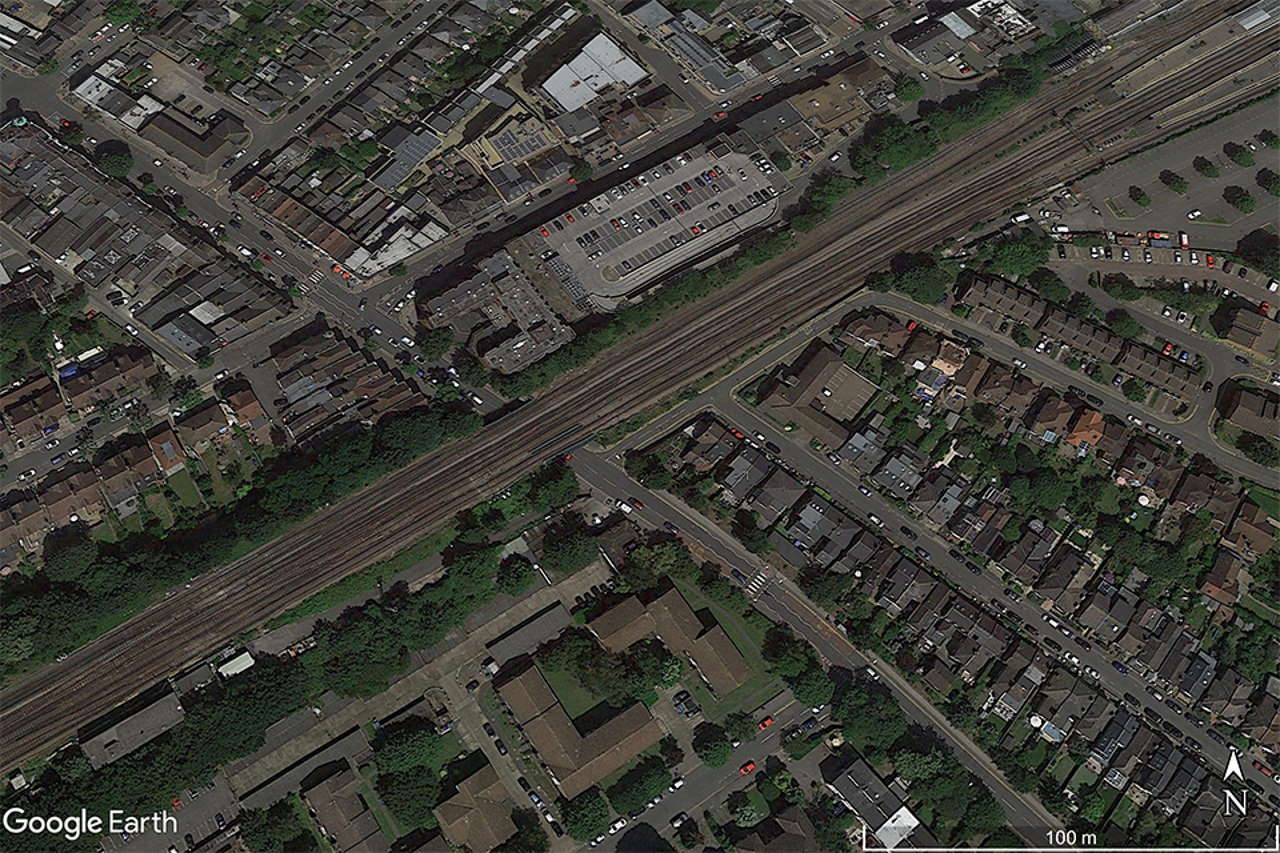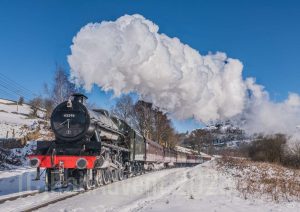The RAIB has released its report following a track worker being struck by a train close to Surbiton station in south-west London on the 9th of February 2021
The accident took place at approximately 11:35 when a passenger train travelling at 76 mph (112 km/h) struck and fatally injured the track worker who was walking in a crossover line between two through lines close to Surbiton station.
The track worker was one of a team of four who were carrying out inspections at the location.
The accident happened due to the track worker who was also the Controller of Site Safety and taking part in the track inspections was not aware of his position in relation to the train.
The RAIB says that the track worker was likely unaware of his position because he was distracted either due to teaching an assistant or by carrying out an actual inspection. Once the track worker was distracted it is possible that he deviated toward the line which the train was travelling this being exacerbated by the layout of the rails at the junction. The train driver sounded the warning horn twice on the train’s approach but neither of the other two people working with the controller of site safety can remember hearing it.
RAIB’s investigation discovered:
- The inspection was organised to be carried out whilst trains were running with a safe system of work in place that utilised unassisted lookouts. This was the least safe type of system of work which could be put in place when working on track, but its ongoing use had not been called into question in the years previous to the accident.
- Network Rail had a programme in place to remove unassisted lookout working but this had not at that time led to changes to the safe systems of work at the depot where the controller of site safety worked.
- The safety of people working on or near railway lines depends on the controller of site safety putting in place and managing a safe system of work, however, when they are also responsible for undertaking work, they are at greater risk of becoming distracted. This can, and has, led to staff being struck by trains or being involved in near misses.
RAIB has put forward three recommendations, two of which are addressed to Network Rail. The first recommendation is in relation to keeping members of workgroups working on or near the line within designated safe limits at times when some or all lines remain open to traffic. The second recommendation is in relation to comprehending the nature and the reasons behind the rule and behavioural non-compliance observed by RAIB in its investigation. A recommendation has also been given to Rail Delivery Group to work with the wider rail industry to improve the judgement of train drivers as to whether track workers are in a dangerous position with reinforcement via the train horn to provide urgent warnings.
RAIB has identified five learning points which relate to:
- Train drivers sounding an urgent warning to track workers where there is uncertainty whether they have moved clear of the line that the train is travelling on
- Track workers looking to confirm which line a train is travelling when hearing a train warning horn
- Track workers having fast access to emergency contact details
- Those creating patrol diagrams or similar to have a correct understanding of the distances of positions of safety from open running lines
- Planners and others who are involved in assembling safe systems of work to consult related patrol diagrams to check for inconsistencies between them
Andrew Hall, Chief Inspector of Rail Accidents said: “As RAIB publishes its report on the tragic death of a track worker at Surbiton last year, our thoughts are with his family and friends.
“After a period of almost five years with no fatalities involving moving trains, track maintenance staff have died in accidents each year from 2018 to 2021.
“In 2019, two track workers were killed near Margam in South Wales, and our investigation found unsafe working practices that had not been detected by Network Rail’s management assurance arrangements.
“At Surbiton, the accident happened probably because a patroller, who was carrying out inspections and was also responsible for the group’s safe system of work, had become distracted and lost awareness of his position relative to the line the train approached on. The patrol was being undertaken with protection provided by unassisted lookouts. Although this was the usual practice for these inspections working with unassisted lookouts is the least safe type of system allowed for when working on track and this had not been challenged in the years leading up to the accident.
“We found evidence that people at the depot involved were aware of the Margam accident, but they were convinced that their circumstances were different and that the earlier lessons did not apply to them. Consequently, managers at the depot did not learn from the experience of Margam and continued to allow much work to be carried out under unassisted lookout protection.
“While Network Rail has made great strides in reducing the amount of track maintenance work undertaken when trains are running, it remains the case that many of the recommendations that we made in the Margam report are relevant to the accident at Surbiton. I urge everyone involved with track maintenance to look closely at what happened here, and learn from it so that deaths at work on the line really do become a thing of the past.”
Network Rail Southern region’s managing director, John Halsall, said: “My thoughts and those of everyone here at Network Rail are with Tyler’s family and friends. We know that nothing we say or do now will make up for the fact that he is no longer with us.
“We worked closely with the RAIB in their investigation and we support their recommendations. We recognised that we needed to accelerate our progress on safety, and we’ve worked to get to a place where we have almost no maintenance activity around open lines, including across the Southern region where we’ve made a 99% reduction.
“There’s still more work to be done, however, and our track-worker safety programme is continuing to implement new technology and new ways of working to keep our people safe.”





Responses